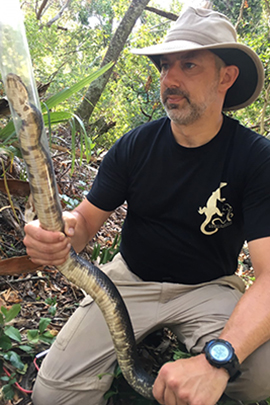
Research by Washtenaw Community College professional faculty member David Wooten is
included in Islands and Snakes: Isolation and Adaptive Evolution, a book published this month by Oxford University Press.
“I’m very humbled and very appreciative to have my work included among these exceptional biologists,” said Wooten, a full-time biology instructor at WCC since 2006.
The book includes 13 chapters, each describing snakes’ ecological roles on particular islands around the world. That includes a chapter on the unique relationship that cottonmouth snakes formed with birds and rats on Seahorse Key Island, where Wooten conducted research alongside Harvey Lillywhite and Coleman Sheehy III from the University of Florida. Lillywhite is co-editor of Islands and Snakes.
Wooten was introduced to Seahorse Key Island while he was a doctoral student at Florida in the early 2000s. He took a sabbatical leave from WCC in the fall of 2017 to return to the site of the unique ecological relationship formed by the island’s primary inhabitants.
The gist of the relationship: Tens of thousands of birds – egrets, herons, ibis and pelicans – returned to the island each year to nest in its large trees. The birds would catch fish from the Gulf of Mexico to feed their chicks. Regurgitated fish were dropped on the island floor, where large venomous Florida cottonmouth snakes would gather to scavenge. The loitering snakes – noted hunters of fish, small mammals, birds, amphibians and reptiles on the Florida mainland; and typically not scavengers – protected the birds from a primary threat. The island’s rat population would have otherwise eagerly climbed the trees to feast on eggs and chicks.
“This is the only place in the world where we know this unique relationship between snakes, birds and rats to exist. Particularly the mutualism between snakes and birds, where the snakes don’t bother the birds or eat their eggs, but rather the birds are protected by the snake population,” Wooten said.
That unique ecological relationship abruptly ended in April 2015.
“Over the course of a few days, every single colonial nesting bird left the island. They were all there one day, and tens of thousands of them were all gone three days later,” Wooten said. “We don’t know why, we don’t know what caused it. They just left their nests – left eggs sitting in their nests, in fact – and went to a neighboring island.”
Because the ecosystem of the island is changing without the large influx of birds, Wooten spent his sabbatical collecting data to build a food web of the island. It examines the trophic connections of the entire 165-acre island, from its pelagic (open ocean) surroundings to its intertidal coastal areas to the forest.
“We wanted to get a snapshot of what that tropic food ecology looked like prior to the birds leaving,” Wooten said. “That will be used as a map or guide as the system changes.”
The Seahorse Key Island chapter in Islands and Snakes is the latest place Wooten has shared his work. It was sent to research constituents at the University of Florida, the Nature Coast Biological Station and the Seahorse Key Marine Station. He’s presented findings to the Michigan Community College Biologists, the Michigan Academy of Science and during WCC’s STEM Week. Wooten continues working on potential scientific journal publication of his research.
One of the most exciting uses of the research, Wooten says, is bringing it into his own WCC biology classes. He said there’s a heightened level of authenticity when using your own work to demonstrate how to build a food web and use it as a predictive model. First-hand tales of field research in exotic locations also capture students’ attention and imagination, he said.
“There was a point in my career where I decided I wanted to do more teaching than research,” Wooten said. “I’ve continued to do some informal research over the years, but it was nice to do something formally. Especially because I can bring that research back into my teaching.”
Tags: Biology, David Wooten, ousearch_News_2019
